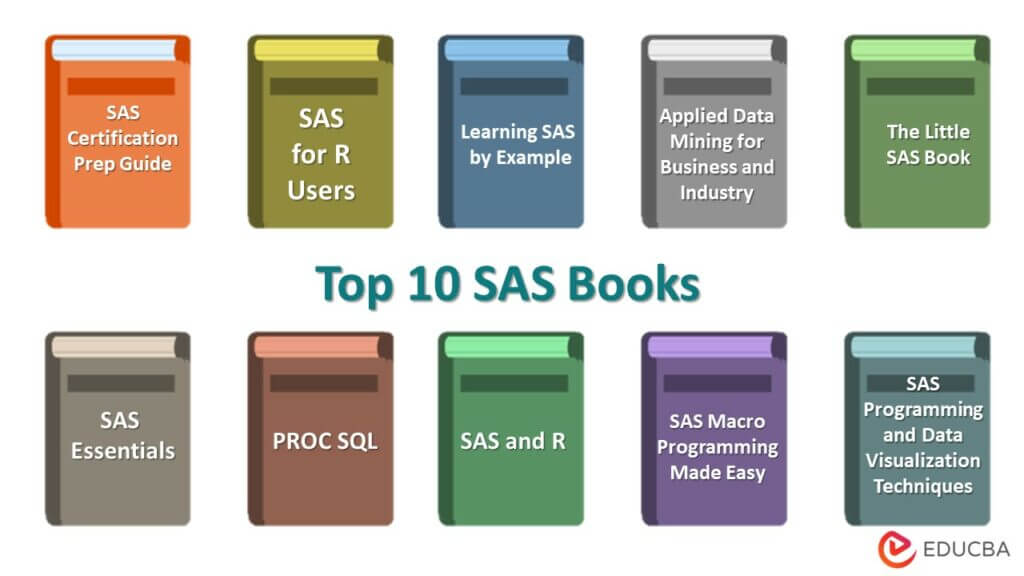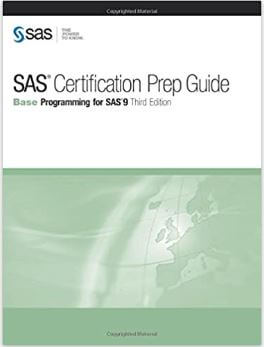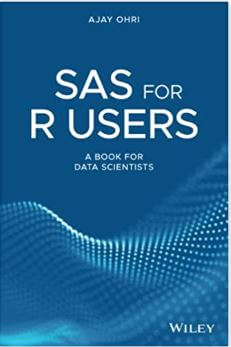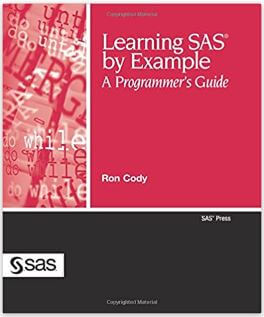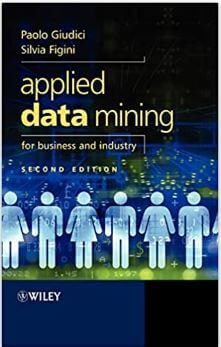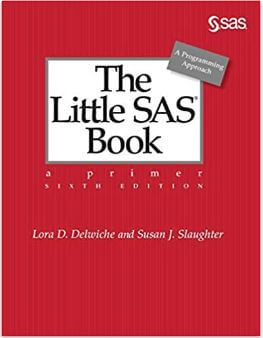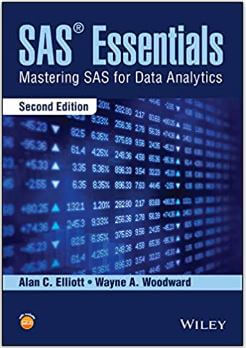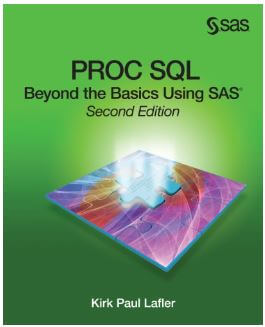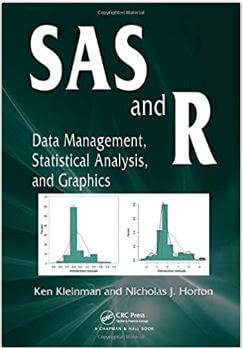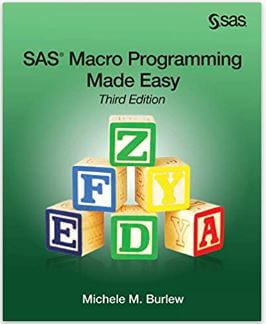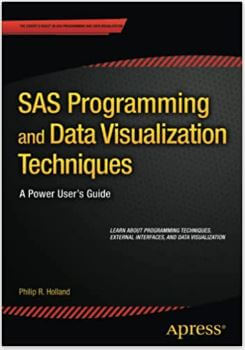Must Read SAS books
The SAS (Statistical Analysis System) software suite is a robust tool for performing complex analytics, managing data, and facilitating business intelligence and looking to enhance your skills in SAS programming, data analysis, and visualization? There’s no better way than to pick up a good book.
This blog post will delve into the realm of SAS books – their purpose, value, and impact on the SAS community. Whether you are an advanced user or a beginner, we aim to provide valuable insights into the best SAS books available today, covering topics such as programming, data analysis, visualization, and more. Our target is to assist you in discovering the suitable SAS book that will aid you in accomplishing your learning and development objectives.
Key Highlights
- Teaches advanced SAS programming techniques and statistical methods.
- Helps in staying up-to-date with the latest trends and developments in SAS.
- It comes with companion software or datasets to practice with.
List of Top 10 SAS Books
To have a better understanding of SAS, have a look at the top 10 SAS books.
|
Sr. No. |
Book | Author | Publish Date |
Rating |
| 1 | SAS Certification Prep Guide: Base Programming for SAS 9 | SAS Institute | 2011 | Amazon: 4.2
Goodreads: 3.94 |
| 2 | SAS for R Users – A Book for Data Scientists | Ajay Ohri | 2019 | Amazon: 5
Goodreads: 3 |
| 3 | Learning SAS by Example: A Programmer’s Guide | Ron Cody | 2007 | Amazon: 4.4
Goodreads: 4.27 |
| 4 | Applied Data Mining for Business and Industry | Paolo Giudici and Silvia Figini | 2009 | Amazon: 2.7
Goodreads: 3.29 |
| 5 | The Little SAS Book: A Primer | Lora D. Delwiche and Susan J. Slaughter | 2019 | Amazon: 4.6
Goodreads: 4.04 |
| 6 | SAS Essentials: Mastering SAS for Data Analytics | Alan C. Elliott and Wayne A. Woodward | 2015 | Amazon: 4.5
Goodreads: 4.33 |
| 7 | PROC SQL: Beyond the Basics Using SAS | Kirk Paul Lafler | 2013 | Amazon: 4.6
Goodreads: 3.67 |
| 8 | SAS and R: Data Management, Statistical Analysis, and Graphics | Ken Kleinman and Nicholas J. Horton | 2009 | Amazon: 3.9
Goodreads: 5 |
| 9 | SAS Macro Programming Made Easy | Michele M. Burlew | 2014 | Amazon: 4.6
Goodreads: 4. |
| 10 | SAS Programming and Data Visualization Techniques: A Power User’s Guide | Philip R. Holland | 2015 | Amazon: 3.4
Goodreads: 4 |
Let us discuss the reviews and takeaways of the SAS books:-
Book #1: SAS Certification Prep Guide: Base Programming for SAS 9
Author: SAS Institute
Book Review
If you’re preparing for the SAS Base Programming certification exam, the SAS Certification Prep Guide is the perfect resource. SAS experts write the guide and cover all the topics you need to know to pass the exam. The guide includes practice questions, exercises, and examples to help you master SAS programming concepts. Whether you’re new to SAS or have some experience, the SAS Certification Prep Guide will help you build the skills you need to become a certified SAS programmer.
Key Takeaways
- Helps to prepare for the SAS certification exam
- Covers the basics of the SAS programming language
- Includes practice questions and exercises
- Provides access to SAS software for practice
Book #2: SAS for R Users – A Book for Data Scientists
Author: Ajay Ohri
Book Review
A Book for Data Scientists is a practical guide to using SAS for data analysis, designed specifically for R users. The book covers the basics of SAS programming, data manipulation, statistical analysis, and more advanced topics like machine learning and text mining. With clear explanations and practical examples, SAS for R Users is an excellent resource for anyone who wants to learn how to use SAS to complement their R skills.
Key Takeaways
- Helps R users learn the SAS programming language
- It covers data manipulation, analysis, and visualization
- Includes comparison of SAS and R for common tasks
- Suitable for data scientists and analysts looking to expand their skills
Book #3: Learning SAS by Example: A Programmer’s Guide
Author: Ron Cody
Book Review
Learning SAS by Example is an excellent choice if you’re looking for a practical, hands-on introduction to SAS programming. The book includes over 200 SAS code examples, explanations, and exercises to help you learn SAS programming concepts. Whether you are a beginner or have some knowledge of SAS, Learning SAS by Example will help you build your skills and gain confidence in using SAS for data analysis.
Key Takeaways
- Teaches SAS programming through examples and case studies
- Covers data manipulation, analysis, and reporting
- Includes step-by-step instructions and explanations
- Suitable for beginners and intermediate users
Book #4: Applied Data Mining for Business and Industry
Author: Paolo Giudici and Silvia Figini
Book Review
Data mining is essential for anyone working in business and industry today. Applied Data Mining for Business and Industry is a comprehensive guide to data mining techniques focusing on practical applications. The book covers everything from data preprocessing to model selection to evaluating the performance of data mining models. Applied Data Mining for Business and Industry is an excellent resource if you want to become a data mining expert.
Key Takeaways
- Focuses on data mining techniques for business applications
- It covers data exploration, clustering, classification, and more
- Includes examples and case studies from real-world business scenarios
- Suitable for business analysts and data scientists
Book #5: The Little SAS Book: A Primer
Author: Lora D. Delwiche and Susan J. Slaughter
Book Review
The Little SAS Book is a classic introduction to SAS programming, and it’s been updated to the latest version of SAS. The book covers all of the essential topics in SAS programming, including data input and manipulation, basic statistical analysis, and graphical output. With clear explanations and practical examples, The Little SAS Book is an excellent resource for anyone new to SAS programming.
Key Takeaways
- Provides an introduction to the SAS programming language
- Covers data manipulation, analysis, and reporting
- Includes examples and exercises
- Suitable for beginners and intermediate users
Book #6: SAS Essentials: Mastering SAS for Data Analytics
Author: Alan C. Elliott and Wayne A. Woodward
Book Review
SAS Essentials is a comprehensive guide to using SAS for data analytics. The book covers everything from basic data manipulation to advanced statistical modeling techniques. With practical examples and exercises, SAS Essentials will help you build your skills in using SAS for data analysis. Whether you’re new to SAS or have some experience, SAS Essentials is an excellent resource for mastering SAS for data analytics.
Key Takeaways
- Provides a comprehensive introduction to SAS programming and data analysis.
- Covers data input/output, data manipulation, statistical analysis, and graphics.
- Includes real-world instances and case studies to help apply SAS to practical problems.
- Offers helpful tips and tricks for efficient SAS programming.
Book #7: PROC SQL: Beyond the Basics Using SAS
Author: Kirk Paul Lafler
Book Review
If you’re familiar with SAS programming, PROC SQL is essential for working with large datasets. Learn advanced PROC SQL techniques with SAS in “PROC SQL: Beyond the Basics Using SAS.” a comprehensive guide to using PROC SQL for data manipulation and analysis. The book covers everything from basic SQL syntax to advanced techniques like subqueries and joins. With practical examples and exercises, PROC SQL: Beyond the Basics Using SAS is an excellent resource for mastering PROC SQL.
Key Takeaways
- Focuses on the powerful SQL procedure in SAS and its advanced features.
- Covers complex SQL queries, data management, and data warehousing.
- Includes code examples and practical tips for optimizing SQL performance.
- Suitable for intermediate to advanced SAS users looking to improve their SQL skills.
Book #8: SAS and R: Data Management, Statistical Analysis, and Graphics
Author: Ken Kleinman and Nicholas J. Horton
Book Review
SAS and R are two of the most popular tools for data analysis, and this book shows you how to use them together. SAS and R: Data Management, Statistical Analysis, and Graphics is a comprehensive guide to using SAS and R for data analysis. The book covers everything from data management and manipulation to statistical analysis and graphical output. With practical examples and exercises, SAS and R: Data Management, Statistical Analysis, and Graphics will help you build your skills in using both tools together. Whether you’re new to SAS or R or have experience with both, this book is an excellent resource for integrating SAS and R into your data analysis workflow.
Key Takeaways
- Provides a comprehensive comparison of SAS and R for data management, analysis, and graphics.
- Covers data input/output, manipulation, statistical modeling, and visualization.
- Includes examples and case studies to demonstrate the strengths and weaknesses of both SAS and R.
- Suitable for users familiar with either SAS or R who want to learn more about the other software.
Book #9: SAS Macro Programming Made Easy
Author: Michele M. Burlew
Book Review
SAS Macro programming is a powerful tool for automating tasks in SAS programming. SAS Macro Programming Made Easy is a practical guide to using SAS Macro programming for data analysis. The book covers all from the basics of SAS Macro programming to advanced techniques like parameterized macros and macro functions. With clear explanations and practical examples, SAS Macro Programming Made Easy is an excellent resource for anyone who wants to know how to use SAS Macro programming to streamline their SAS programming tasks.
Key Takeaways
- It focuses on SAS macro programming, a powerful tool for automating repetitive tasks.
- Covers macro language fundamentals, macro variables, macro functions, and macro programming techniques.
- Includes examples and practical tips for efficient macro programming.
- Suitable for intermediate SAS users looking to improve their macro programming skills.
Book #10: SAS Programming and Data Visualization Techniques: A Power User’s Guide
Author: Philip R. Holland
Book Review
SAS Programming and Data Visualization Techniques is a comprehensive guide to using SAS for data analysis and visualization. The book covers everything from data manipulation and analysis to creating high-quality visualizations of your data. With practical examples and exercises, SAS Programming and Data Visualization Techniques will help you build your skills in using SAS for data analysis and visualization. Whether you’re new to SAS or have some experience, this book is an excellent resource for mastering SAS programming and data visualization techniques.
Key Takeaways
- Focuses on advanced SAS programming techniques for data manipulation, analysis, and visualization.
- It covers advanced SAS programming concepts, statistical modeling, and data visualization.
- Suitable for advanced SAS users looking to expand their data analysis and visualization skills.
Recommended Articles
Our Top 10 SAS books compilation aims to be helpful to you. For more such SAS books, EDUCBA recommends the following,
